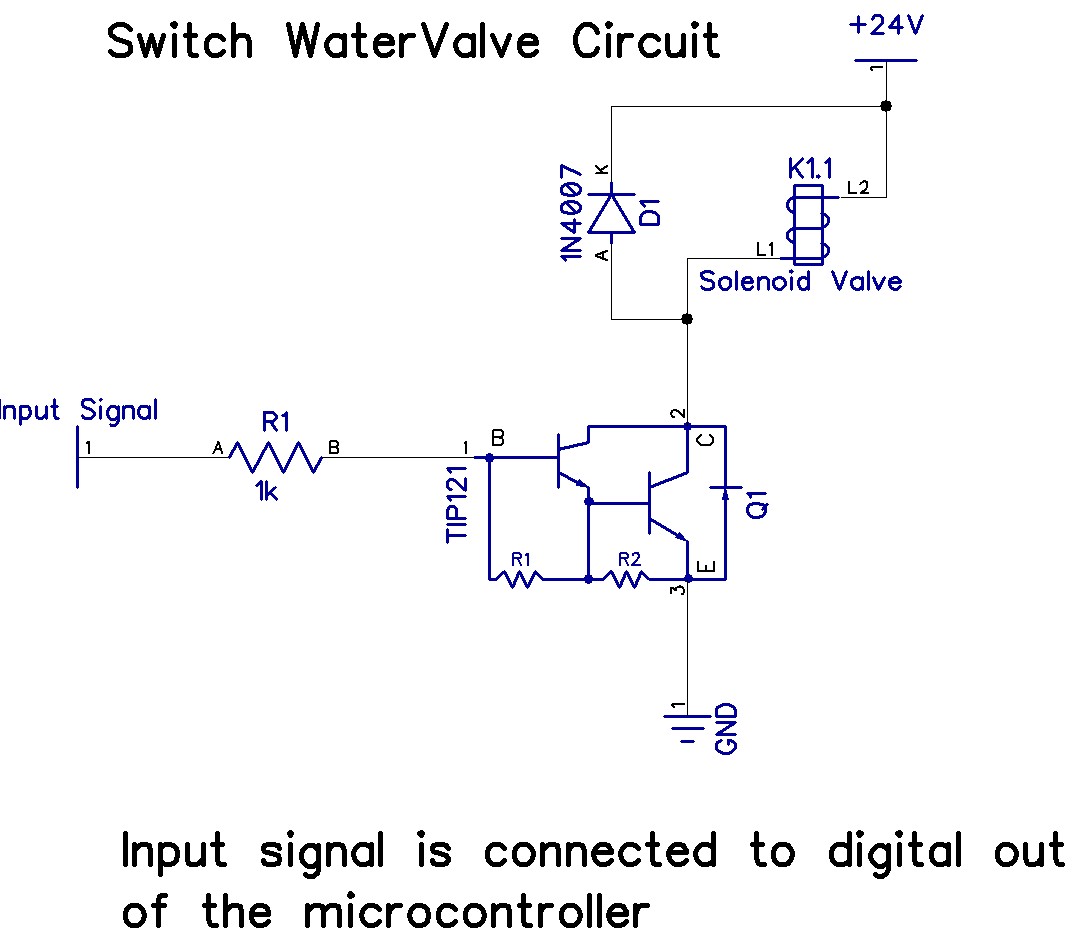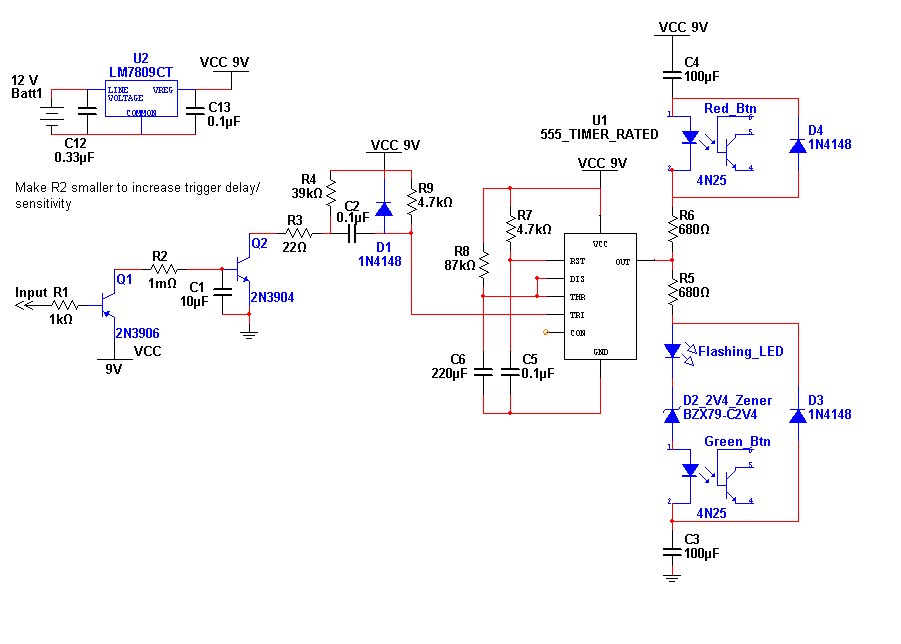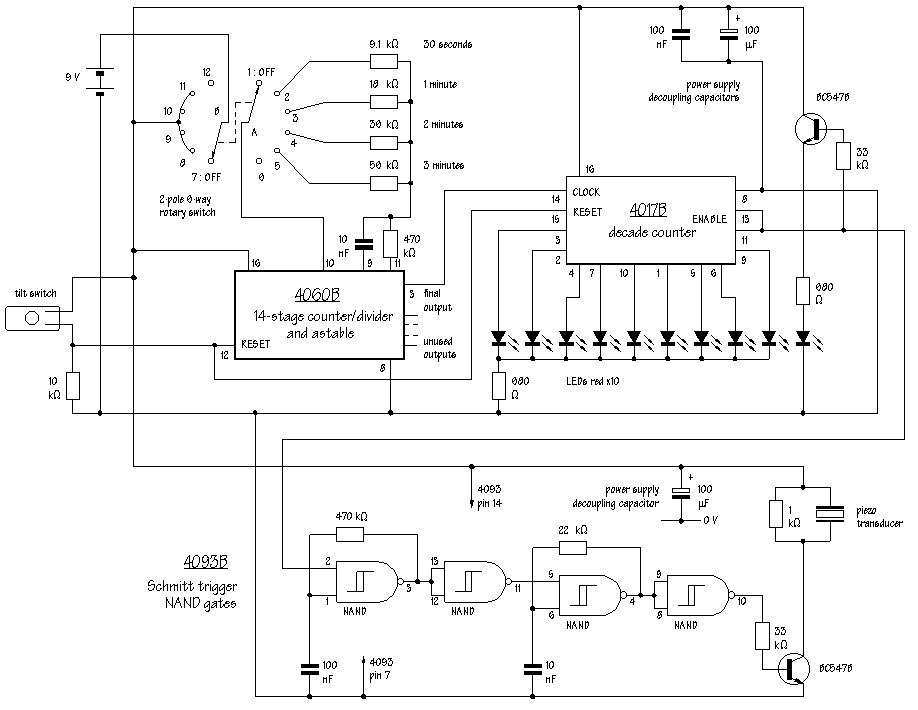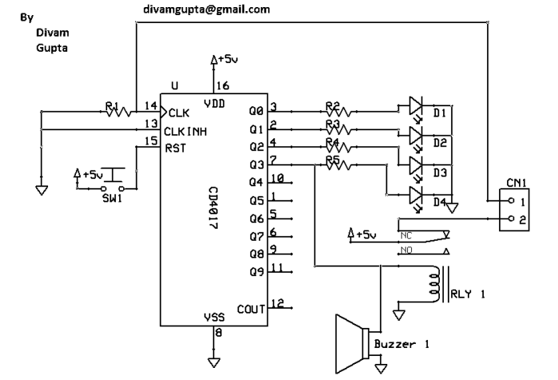
Ball Game Scoring Device (CD4027CD4055CD40192)Circuit
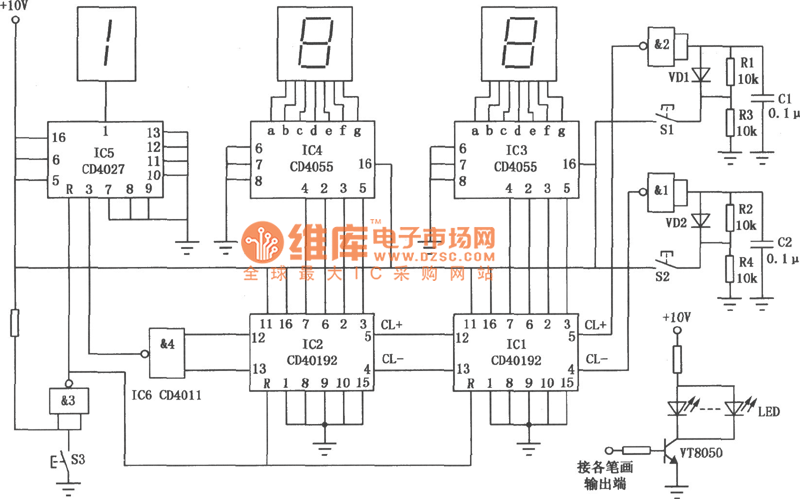
The circuit for the ball game scoring device is depicted in the accompanying image. This device records and displays the performance of a ball game. The first Nixie tube has two states: it can either be off or display the number 1. The subsequent two Nixie tubes can represent ten states, ranging from 0 to 9. Consequently, the maximum score that this scoring machine can display is 199. The circuit is designed to...
The ball game scoring device utilizes Nixie tubes for score representation, providing a visual indication of the game's progress. The first Nixie tube serves a binary function, indicating either a score of zero (off) or a score of one (on). This allows for straightforward scoring when the total is less than ten points. The two additional Nixie tubes are capable of displaying any digit from 0 to 9, effectively allowing for scores up to 99.
When combined, these components create a scoring range from 0 to 199, as the first tube can represent a score of 1 in conjunction with the other two tubes. The circuit design likely incorporates a binary counter or a similar counting mechanism that increments the score based on game events, such as points scored by players.
Power supply considerations for the circuit are critical, as Nixie tubes require a high voltage (typically around 170V) to operate efficiently. This necessitates the inclusion of a suitable power supply circuit that can safely convert and regulate the voltage from a standard power source. Additionally, the circuit may include driver transistors or integrated circuits to facilitate the control of the Nixie tubes, ensuring reliable operation and accurate score representation.
For user interaction, the circuit may feature buttons or switches that allow for manual score adjustments, as well as reset functionality to clear the score at the end of a game. The design should also consider aspects such as heat dissipation, as Nixie tubes can generate heat during operation, and should be housed in a manner that protects the components while allowing for visibility of the score display.
Overall, the ball game scoring device circuit is an effective solution for tracking and displaying scores in a visually appealing manner, leveraging the unique characteristics of Nixie tubes to enhance the gaming experience.Ball game scoring device s circuit is as shown in the picture. It is used to record and display the performance of a ball game. The first Nixie tube has only two states, that is extinguishing or displaying 1; the next two Nixie tube can display ten states from 0 to 9. Therefore, the maximum scoring of the scoring machine can reach 199. The circuit is m.. 🔗 External reference
The ball game scoring device utilizes Nixie tubes for score representation, providing a visual indication of the game's progress. The first Nixie tube serves a binary function, indicating either a score of zero (off) or a score of one (on). This allows for straightforward scoring when the total is less than ten points. The two additional Nixie tubes are capable of displaying any digit from 0 to 9, effectively allowing for scores up to 99.
When combined, these components create a scoring range from 0 to 199, as the first tube can represent a score of 1 in conjunction with the other two tubes. The circuit design likely incorporates a binary counter or a similar counting mechanism that increments the score based on game events, such as points scored by players.
Power supply considerations for the circuit are critical, as Nixie tubes require a high voltage (typically around 170V) to operate efficiently. This necessitates the inclusion of a suitable power supply circuit that can safely convert and regulate the voltage from a standard power source. Additionally, the circuit may include driver transistors or integrated circuits to facilitate the control of the Nixie tubes, ensuring reliable operation and accurate score representation.
For user interaction, the circuit may feature buttons or switches that allow for manual score adjustments, as well as reset functionality to clear the score at the end of a game. The design should also consider aspects such as heat dissipation, as Nixie tubes can generate heat during operation, and should be housed in a manner that protects the components while allowing for visibility of the score display.
Overall, the ball game scoring device circuit is an effective solution for tracking and displaying scores in a visually appealing manner, leveraging the unique characteristics of Nixie tubes to enhance the gaming experience.Ball game scoring device s circuit is as shown in the picture. It is used to record and display the performance of a ball game. The first Nixie tube has only two states, that is extinguishing or displaying 1; the next two Nixie tube can display ten states from 0 to 9. Therefore, the maximum scoring of the scoring machine can reach 199. The circuit is m.. 🔗 External reference
